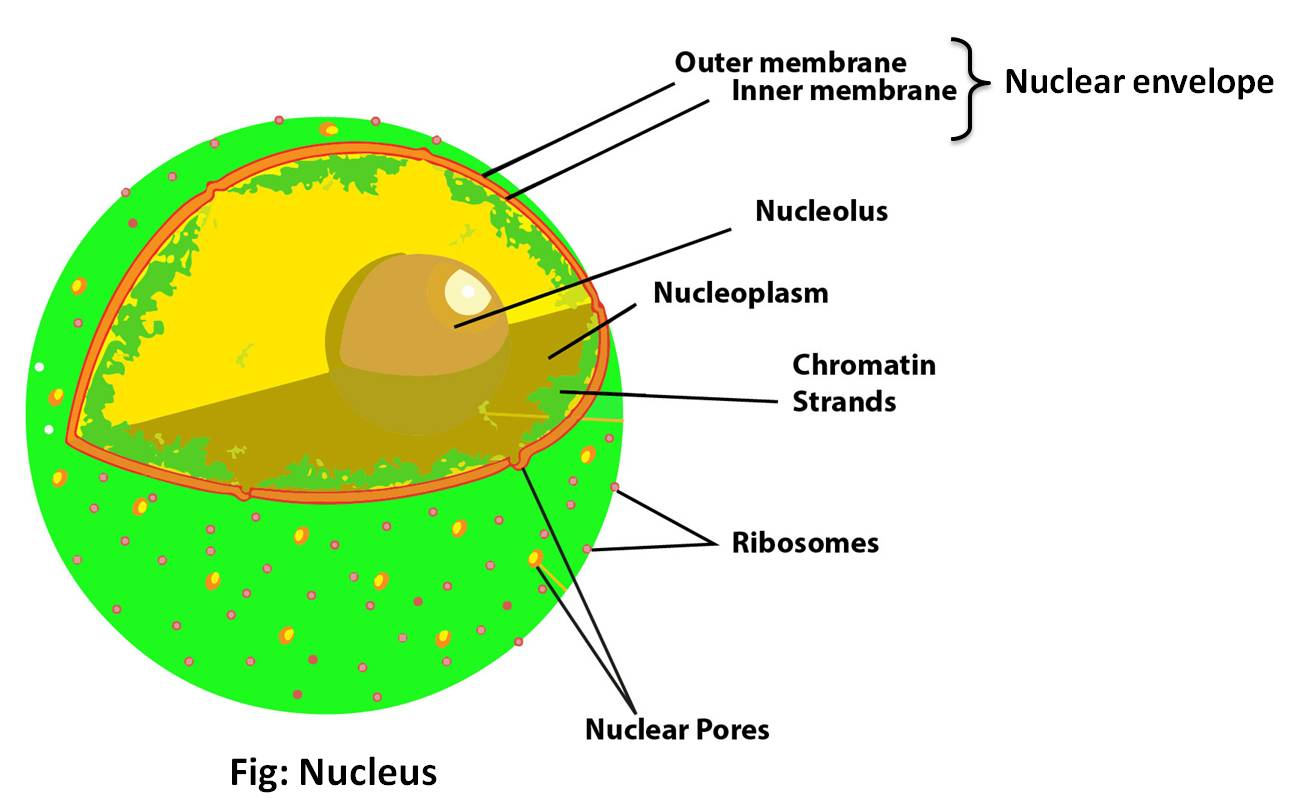
State the differences between Nucleus and Nucleolus.
Answer
489.3k+ views
Hint: In a prokaryotic cell, the nucleus and nucleolus are not present. Their presence is a characteristic feature of a eukaryotic cell. A prokaryotic cell is identified by the absence of any well-defined structure for its genome, opposite to a eukaryotic cell.
Complete answer:
Difference between nucleus and nucleolus:

Additional Information: A nucleus has four components: nuclear envelope, nucleolus, nuclear matrix, and chromosomes.
Nuclear envelope: It consists of two concentric membranes called the inner and outer nuclear membranes separating the contents of the nucleus or the nucleoplasm from the cytoplasm. Transport of any protein or molecule occurs through the nuclear pores.
Nuclear matrix: it is a network of protein filaments that provides a structural framework for the organized chromatin while facilitating replication and transcription. It provides mechanical strength and shape to the nucleus.
Nucleolus: It is a naked, round or irregular structure produced by Nucleolar Organizing Regions of a chromosome (NOR) which is termed as a nucleolar organizing chromosome. They are ribosome synthesizing machinery.
Chromosome: A single dsDNA is coiled and with the help of histones and condensed to form chromatin in eukaryotes. Chromatin and chromosome are the same things. Chromatin is less condensed and extended DNA than chromosomes.
Note: DNA bears genes which are a particular set of nucleotide sequences that later produces proteins. Two types of regions are observed on chromosomes:
- Heterochromatin: These are the highly condensed and darkly stained region of chromosomes. They are transcriptionally silent and do not produce proteins.
- Euchromatin: It is a less condensed and lightly stained region of the chromosome that is transcriptionally active.
Complete answer:
Difference between nucleus and nucleolus:
| Property | Nucleus | Nucleolus |
| Location | It is located centrally in an animal cell while in a plant cell, it is located on the periphery. | It is located in the central or periphery region of the nucleus. |
| Membrane | It is encircled with a prominent nuclear envelope. | It is a non-membrane bound structure. |
| Components | It is rich in DNA which is associated with histones( a type of positively charged proteins). | These are rich in RNA and ribosomal proteins. |
| Function | It contains hereditary information in the form of genes arranged on DNA and controls a cell division and metabolism, expression, and production of protein. | It contains the information regarding the transcription of the gene producing ribosomal RNA and assembly of ribosomes. |

Additional Information: A nucleus has four components: nuclear envelope, nucleolus, nuclear matrix, and chromosomes.
Nuclear envelope: It consists of two concentric membranes called the inner and outer nuclear membranes separating the contents of the nucleus or the nucleoplasm from the cytoplasm. Transport of any protein or molecule occurs through the nuclear pores.
Nuclear matrix: it is a network of protein filaments that provides a structural framework for the organized chromatin while facilitating replication and transcription. It provides mechanical strength and shape to the nucleus.
Nucleolus: It is a naked, round or irregular structure produced by Nucleolar Organizing Regions of a chromosome (NOR) which is termed as a nucleolar organizing chromosome. They are ribosome synthesizing machinery.
Chromosome: A single dsDNA is coiled and with the help of histones and condensed to form chromatin in eukaryotes. Chromatin and chromosome are the same things. Chromatin is less condensed and extended DNA than chromosomes.
Note: DNA bears genes which are a particular set of nucleotide sequences that later produces proteins. Two types of regions are observed on chromosomes:
- Heterochromatin: These are the highly condensed and darkly stained region of chromosomes. They are transcriptionally silent and do not produce proteins.
- Euchromatin: It is a less condensed and lightly stained region of the chromosome that is transcriptionally active.
Recently Updated Pages
The correct geometry and hybridization for XeF4 are class 11 chemistry CBSE

Water softening by Clarks process uses ACalcium bicarbonate class 11 chemistry CBSE

With reference to graphite and diamond which of the class 11 chemistry CBSE

A certain household has consumed 250 units of energy class 11 physics CBSE

The lightest metal known is A beryllium B lithium C class 11 chemistry CBSE

What is the formula mass of the iodine molecule class 11 chemistry CBSE

Trending doubts
Why was the Vernacular Press Act passed by British class 11 social science CBSE

Arrange Water ethanol and phenol in increasing order class 11 chemistry CBSE

Name the nuclear plant located in Uttar Pradesh class 11 social science CBSE

One Metric ton is equal to kg A 10000 B 1000 C 100 class 11 physics CBSE

What steps did the French revolutionaries take to create class 11 social science CBSE

How did silk routes link the world Explain with three class 11 social science CBSE




